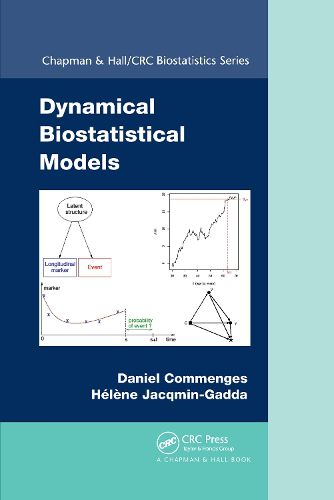Readings Newsletter
Become a Readings Member to make your shopping experience even easier.
Sign in or sign up for free!
You’re not far away from qualifying for FREE standard shipping within Australia
You’ve qualified for FREE standard shipping within Australia
The cart is loading…






Dynamical Biostatistical Models presents statistical models and methods for the analysis of longitudinal data. The book focuses on models for analyzing repeated measures of quantitative and qualitative variables and events history, including survival and multistate models. Most of the advanced methods, such as multistate and joint models, can be applied using SAS or R software.
The book describes advanced regression models that include the time dimension, such as mixed-effect models, survival models, multistate models, and joint models for repeated measures and time-to-event data. It also explores the possibility of unifying these models through a stochastic process point of view and introduces the dynamic approach to causal inference.
Drawing on much of their own extensive research, the authors use three main examples throughout the text to illustrate epidemiological questions and methodological issues. Readers will see how each method is applied to real data and how to interpret the results.
$9.00 standard shipping within Australia
FREE standard shipping within Australia for orders over $100.00
Express & International shipping calculated at checkout
Dynamical Biostatistical Models presents statistical models and methods for the analysis of longitudinal data. The book focuses on models for analyzing repeated measures of quantitative and qualitative variables and events history, including survival and multistate models. Most of the advanced methods, such as multistate and joint models, can be applied using SAS or R software.
The book describes advanced regression models that include the time dimension, such as mixed-effect models, survival models, multistate models, and joint models for repeated measures and time-to-event data. It also explores the possibility of unifying these models through a stochastic process point of view and introduces the dynamic approach to causal inference.
Drawing on much of their own extensive research, the authors use three main examples throughout the text to illustrate epidemiological questions and methodological issues. Readers will see how each method is applied to real data and how to interpret the results.